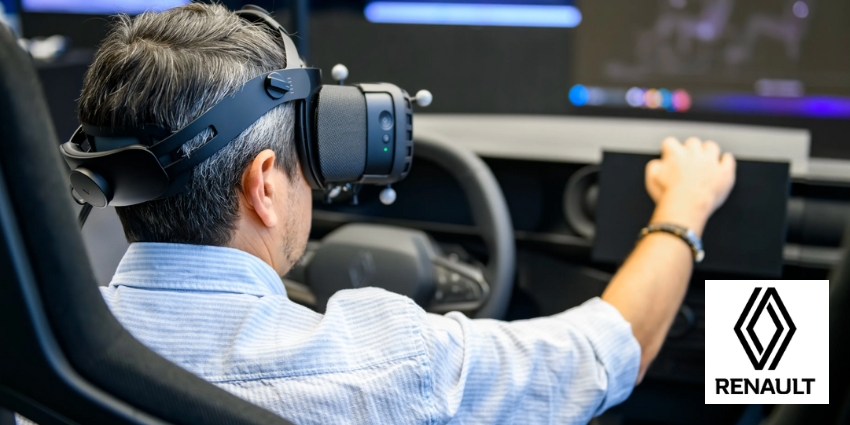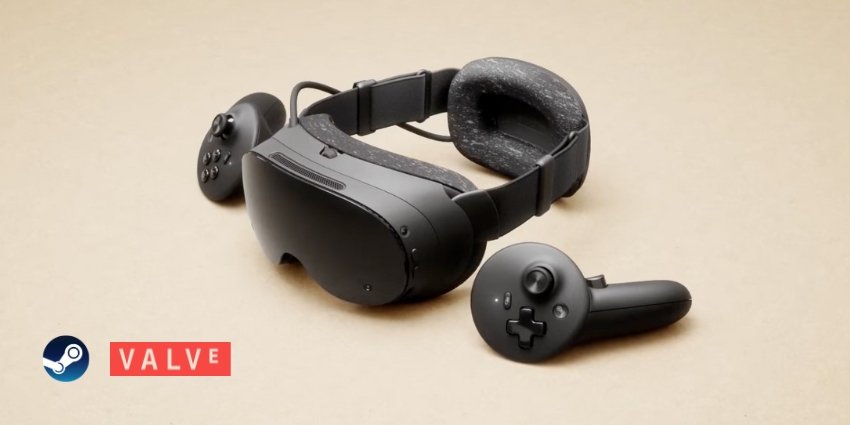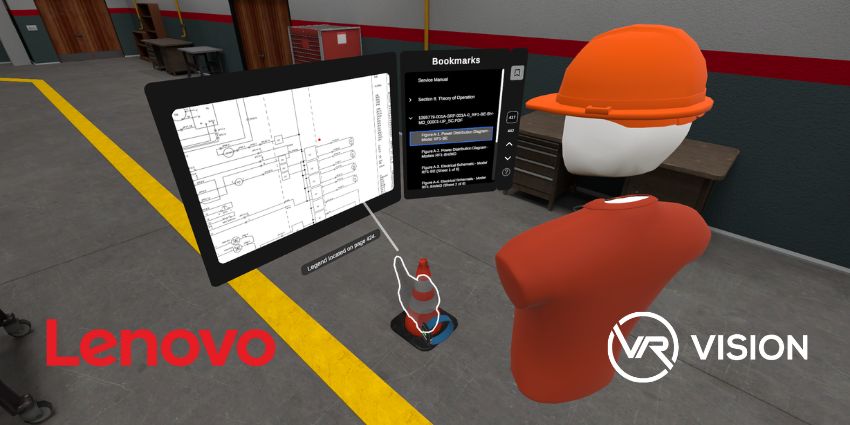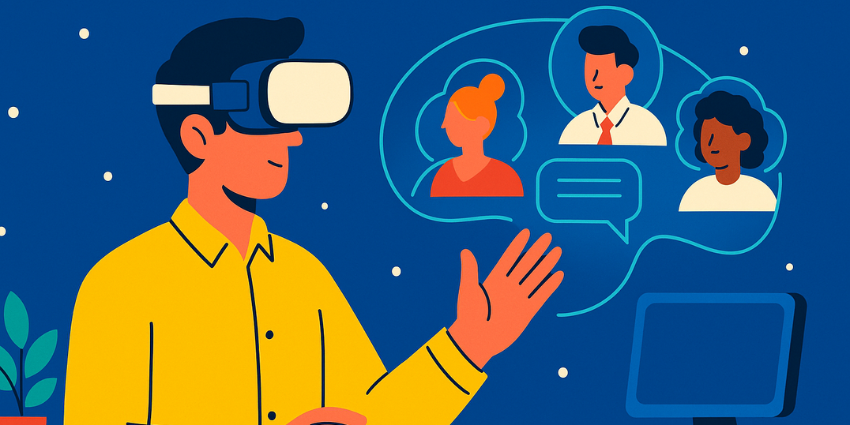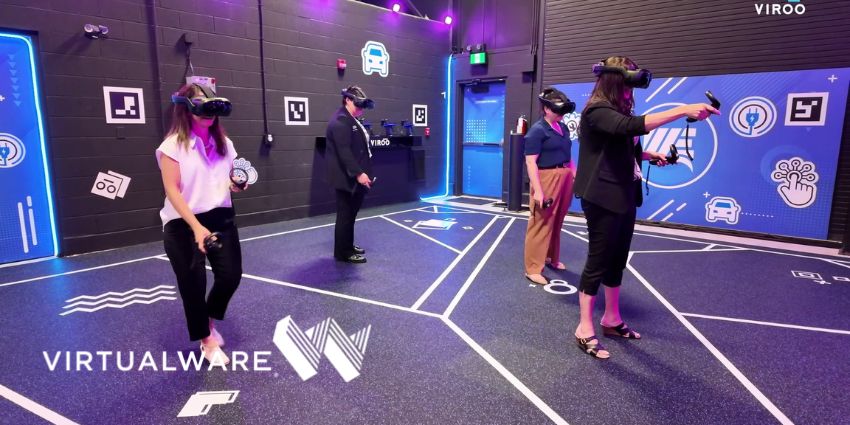Increasingly, companies in the Media and Telecom sector are beginning to discover the benefits of an XR-enhanced landscape. Not only does the right technology give telecommunications brands more freedom to support employees in their day-to-day activities, but XR can also help with engaging customers and opening new worlds for monetization.
As concepts like 5G become more accessible, companies in the telecoms and media space are starting to invest in partnerships with companies capable of helping them power the new age of immersive experience.
Today, we’re going to be looking at some of the most interesting case studies from the Telecom and Media world, highlighting the potential of the XR environment.
Verizon and Penske Entertainment
Verizon discovered a new avenue for monetizing the XR landscape through access to powerful XR connectivity for its customers recently. When the Penske Entertainment media group began shifting to remote work, it knew access to innovative new technologies was critical to ensuring business continuity. Fortunately, Verizon and BlueJeans offered a video conferencing and event platform for collaboration, while Verizon’s 5G environment paved the way for immersive experiences.
The power of Verizon 5G allowed for the development of the first-ever virtual drivers meeting for Penske Entertainment. The BlueJeans platform helped with producing the show, while a 360-degree, ultra-wideband 5G augmented reality camera allows Penske to create a truly phenomenal fan experience when positioned in the field.
Working together, Verizon and Penske Entertainment were able to leverage 5G and AR technology to create new augmented reality experiences for modern racing events. This allowed the Penske Entertainment brand to thrive even during the pandemic.
Unity and Tencent Games
Tencent Games is currently one of the companies investing heavily in the future of the Metaverse. The brand has recently announced its decision to purchase new VR hardware technology specifically for this purpose. Even before the rise of the Metaverse, however, Tencent was already investing heavily in AR and VR solutions.
After acquiring Riot Games and League of Legends, Tencent Games began working with Unity on the development of immersive MOBA games like Arena of Valor.
Though at this stage, the partnership with Unity hasn’t led to the development of any VR or AR gaming experiences, the case study between Unity and Tencent highlights how the gaming brand may be able to build on its existing foundations for a future metaverse environment.
Mursion and T-Mobile
An excellent example of how a telecommunications company can leverage the power of XR to improve productivity and performance in teams, T-Mobile worked with Mursion on an XR strategy for training. The company wanted to prepare their leadership professionals as much as possible for a merger with the Sprint company and chose experiential learning as the method to do so.
Mursion, the AI-powered immersive training simulation company, ran leaders in the T-Mobile ecosystem through simulations of scenarios to do with change management. Learners needed to gain buy-in and adoption from employees who were resistant to change, and completed scenarios in 30-minute increments to build their skills.
By the end of the training experience, around 90% of employees showed exceptional competency in handling change management scenarios, and T-Mobile expanded the training scope even further. Now, 20 new learners per month are added to the program.
KPN, Accenture and Google Glass
KPN, a leading telecom provider in the Netherlands supporting 33 million fixed-line and mobile subscribers throughout Europe and the country, is leveraging XR in its field services strategy.
The operational scale of the company means there’s a perpetual challenge to overcome when it comes to maintaining network equipment and uptime. Already, the company employs more than 3,000 field technicians, responsible for everything from routine maintenance to base stations.
Throughout the maintenance process, technicians need plenty of guidance based on the variability of each piece of equipment. With an eye on the future of XR, the KPN decided to enlist Accenture to create an AR-based solution, capable of guiding field technicians with a customized combination of unique software and Google Glass.
The AR smart glasses and software allowed field technicians to access live remote help, diagnostics, and remote help from seasoned experts.
Deutsche Telekom and Alzheimer’s Research
Highlighting how Telecommunications and media companies can leverage XR for the greater good, Deutsche Telekom partnered with a range of groups, including Alzheimer’s Research, the University College of London, and the University OF East Anglia.
The result of the collaboration was the first VR game developed with the support of Telecom brand, where players could help to advance research into dementia via gameplay.
The unique virtual reality game allows anyone help access to fight dementia, and builds on a previous immersive game created by the company “Sea Hero Quest”. The core focus of the game is gathering data which can allow for more immersive and intuitive diagnostic assessments of problems people with dementia might have with their navigation skills.
This case study highlights how telecommunications companies can work alongside immersive content creators to potentially make the world a better place.
AT&T and the Dallas Cowboys
One of the earlier examples of telecommunications and media companies leveraging the power of AR on this list, the story of AT&T and the Dallas Cowboys is still one well worth checking out. Working together with the Dallas Cowboys, Samsung, and NETGEAR, AT&T created an immersive selection of new 5G attractions at the nation’s first 5G-enabled stadium in 2019.
The company provided a range of unique ways for fans to interact with the sporting landscape through realistic volumetric 3D video, and Augmented Reality.
According to AT&T, creating such unique experiences required the processing of huge amounts of data which would have been impossible without the adoption of 5G technology.
You can learn more about all of the immersive experiences offered by AT&T and the Dallas Cowboys by reading the full stadium case study here.


